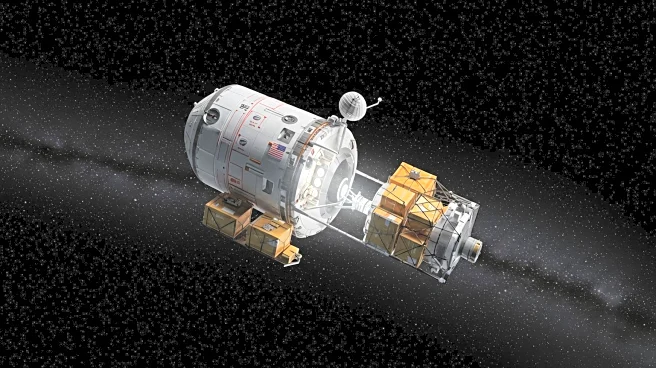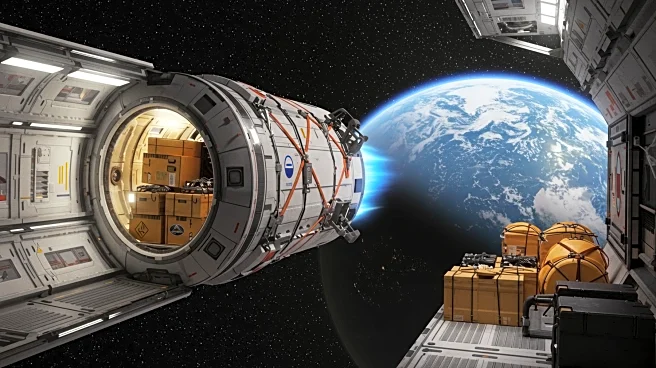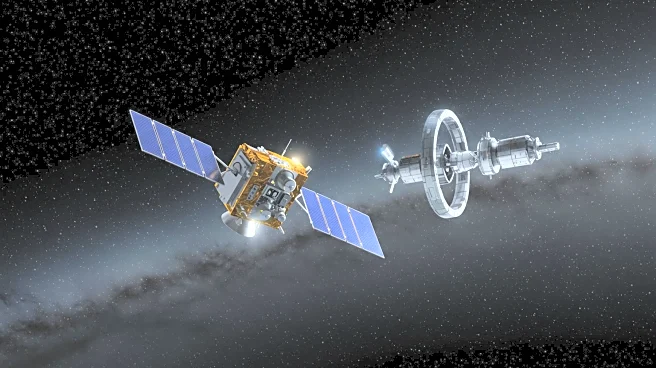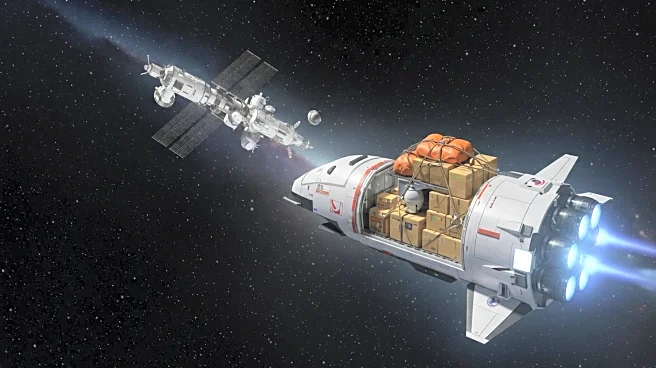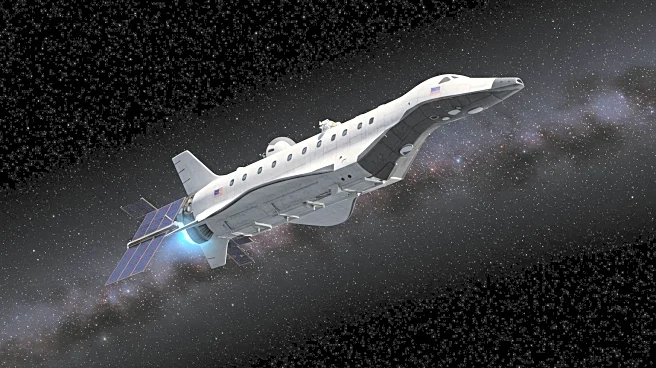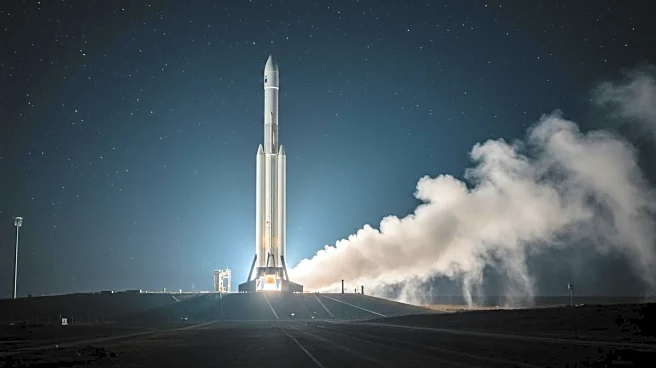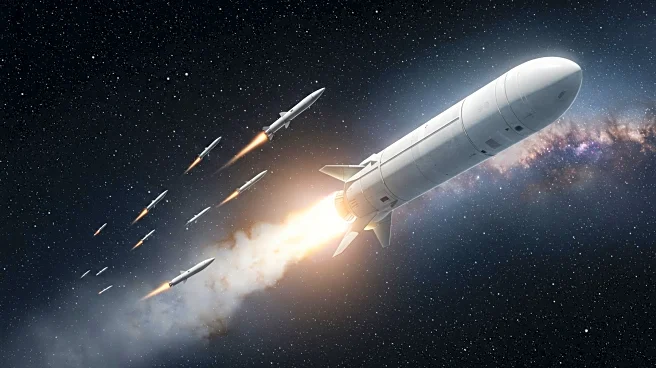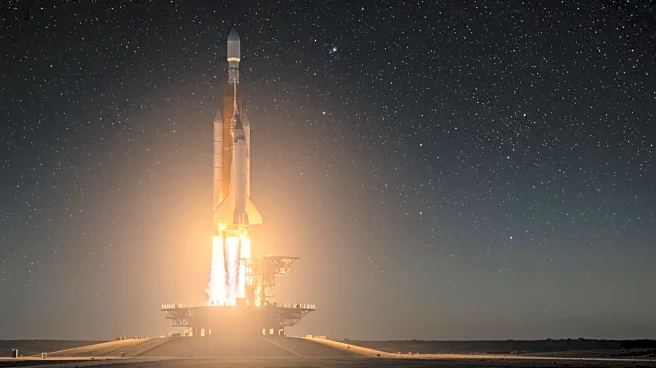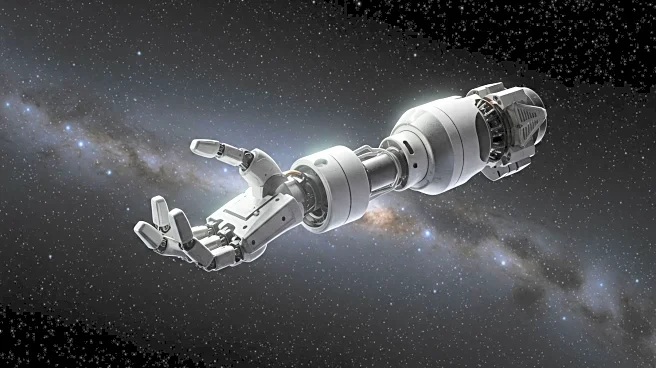What's Happening?
SpaceX's Dragon cargo capsule, launched on August 24, 2025, is scheduled to dock with the International Space Station (ISS) on August 25. This mission, designated CRS-33, is part of NASA's Commercial Resupply Services program. The capsule carries approximately 5,000 pounds of food, supplies, and scientific experiments, including technology for 3D printing metal parts and bioprinting tissue in microgravity. These innovations aim to provide astronauts with essential tools and medical support for future lunar and Mars missions. The docking process will be broadcast live, allowing the public to witness the culmination of a 29-hour orbital chase.
Why It's Important?
The CRS-33 mission is pivotal for sustaining the ISS's operations and advancing scientific research in space. The introduction of 3D printing and bioprinting technology in microgravity could significantly enhance astronauts' ability to produce necessary equipment and medical supplies independently, reducing reliance on Earth-based resources. This capability is vital for long-term missions to the Moon and Mars, where resupply opportunities are scarce. Furthermore, the Dragon capsule's role in maintaining the ISS's altitude through engine burns underscores SpaceX's contribution to the station's stability, especially as Russia considers withdrawing from the ISS consortium by 2028.
What's Next?
After docking, the Dragon capsule will assist in maintaining the ISS's altitude via engine burns, a task traditionally performed by Russian Progress cargo vehicles. The CRS-33 mission is expected to conclude in December 2025, with the Dragon capsule returning to Earth, carrying samples and scientific equipment for further study. As Russia contemplates its exit from the ISS partnership, reliance on SpaceX's Dragon and Northrop Grumman's Cygnus vehicles for station-boosting operations may increase, prompting discussions among remaining partners about future strategies for ISS maintenance.
Beyond the Headlines
Russia's potential departure from the ISS consortium could lead to significant changes in international space collaboration. Remaining partners may need to explore alternative methods for station maintenance and consider new alliances to ensure the ISS's continued operation. This situation highlights the importance of developing autonomous capabilities for space missions, as demonstrated by SpaceX's advancements in cargo delivery and station-boosting technologies.
